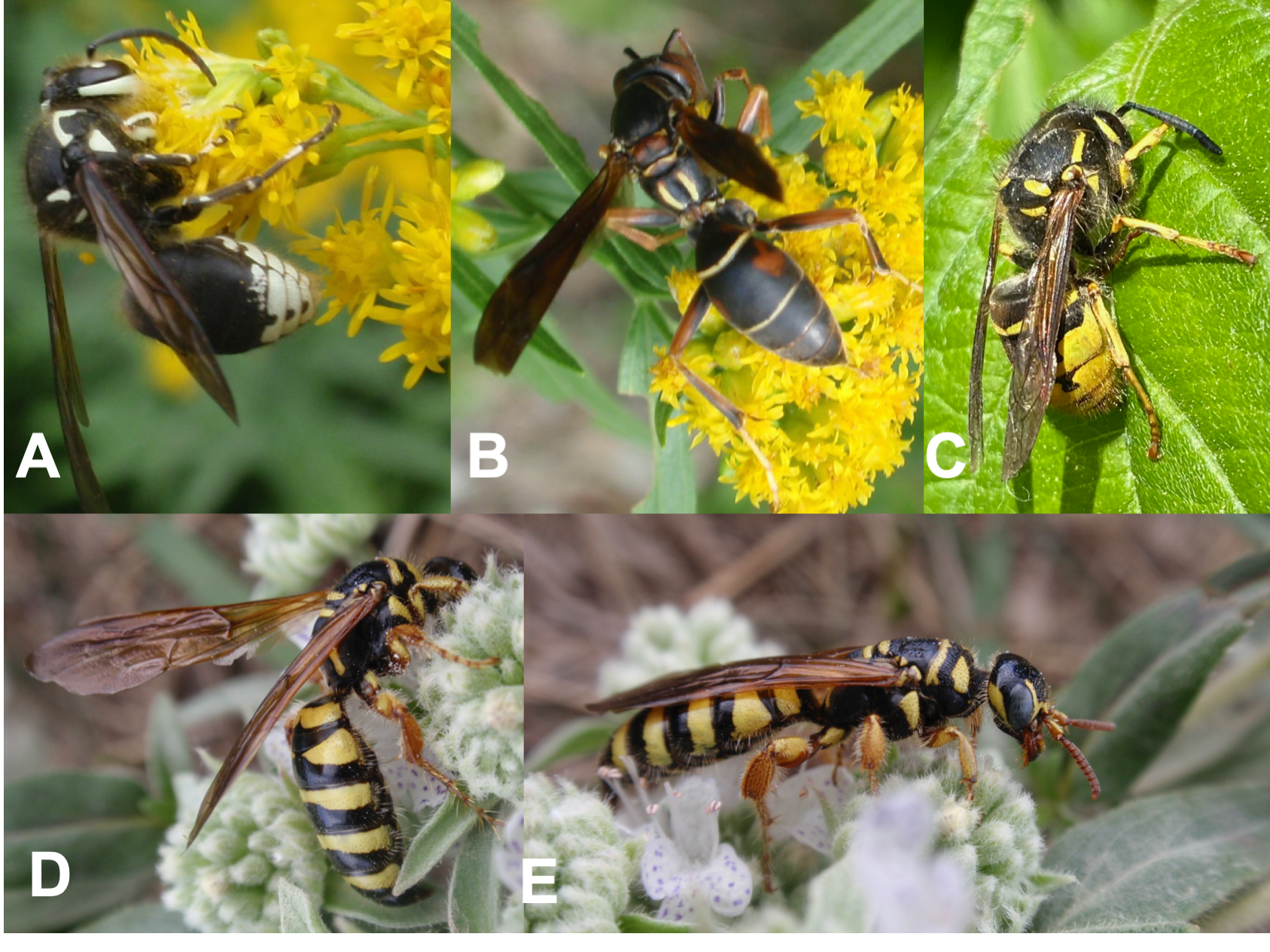Michigan insects in the garden – Week 11: Five-banded thynnid wasp
A black and yellow wasp you’d be glad to see at your picnics this summer.

It’s the time of year when some of Michigan’s predatory social wasps change their diets from the protein they get from eating other insects to the carbohydrates (i.e., sugars) found in flower nectar. Unfortunately, the sugars found in ripe fruit, fruit juice and soft drinks also attract the attention of these insects. The most notorious for this behavior in Michigan are the yellow jacket wasps (Vespula spp., Family: Vespidae). The bold black and yellow pattern on the abdomen of yellowjackets serves to warn would-be-predators that this insect is armed with a defensive sting and that it should be avoided.
Many insects have evolved a similar color pattern because it protects them from predators who mistake them for yellowjackets and other wasps (Photo 2). One of those, the subject of today’s article, is the five-banded thynnid wasp (Myzinum quinquecinctum). These wasps are not likely to visit your picnic table, but they are commonly seen on flowers in late summer.

The five-banded thynnid is in the same insect order (Hymenoptera) as yellowjackets and other wasps, but in a different family, Thynnidae. Wasps in this family are solitary hunters, they don’t create large nests and they are not aggressive, although they do have a functional stinger. Thynnids use their stinger to paralyze prey, much like the great golden digger wasps mentioned in our previous Michigan insects in the garden article. However, rather than carry their paralyzed prey away, thynnid wasps prefer to leave them where they found them. They will simply lay an egg on the paralyzed host insect and continue on their way.
The five-banded thynnid utilizes hosts in the family Scarabaeidae to complete its development. This means they may help control the population of pests like Japanese beetle (Popilia japonica), European chafer (Rhizotrogus majalis), rose chafer (Macrodactylus subspinosus) and white grubs (Phyllophaga spp.) The adult female thynnid searches for these beetles when they are in the grub stage in the soil, paralyzes them and lays her egg. Upon hatching from the egg, the wasp larva attaches itself to the outside of the paralyzed grub and slowly consumes it in the span of about two weeks. The wasp larva will form a cocoon in the soil where it will spend the winter before emerging as an adult wasp the following summer.

The next time you see a black and yellow wasp in your yard or garden, think twice about reaching for the can of insecticide. The adult female five-banded thynnid is just under an inch long with a robust body and can be easily mistaken for a yellow jacket wasp. However, unlike thynnids, yellowjackets nest in large colonies of hundreds to thousands of workers. If the wasps you are seeing are coming in and out of a single hole in the ground that is approximately the size of a quarter, they are yellowjackets, not thynnids. Learn what to do about yellowjackets from Michigan State University Plant & Pest Diagnostics.
If you think you have grubs in your lawn and no thynnids nearby, read this article from MSU Extension about how to select an appropriate grub control product. Healthy turf can tolerate grub damage and many grub control products will harm beneficial insects like pollinators and ground nesting wasps. Smart Gardening practices like raising your mower height can keep your turf healthy without harming beneficial insects. You can learn about other insects that look like wasps and how to tell them apart in “Smart Gardening: Know the insects that look like bees” from MSU Extension.



 Print
Print Email
Email





